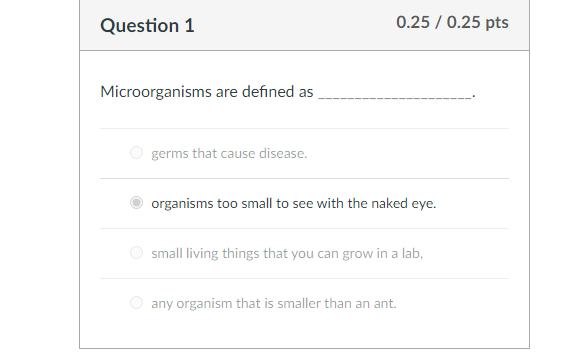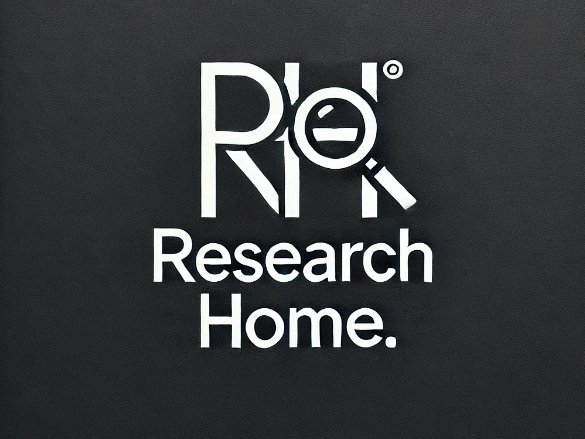Main Themes of Microbiology-BIOL-107
Main Themes of Microbiology
Question 1
Microorganisms are defined as _____________________.
germs that cause disease.
organisms too small to see with the naked eye.
organisms too small to see with the naked eye.
small living things that you can grow in a lab,
any organism that is smaller than an ant.
Question 2
Which of the following can be found in both prokaryotic and eukaryotic cells (choose all that apply)?
nucleus
mitochondria
mitochondria
RNA
plasma membrane
membrane bound organelles
chloroplasts
ribosomes
DNA
Question 3
Which of the following can be found only in eukaryotic cells (choose all that apply)?
chloroplasts
RNA
RNA
mitochondria
ribosomes
plasma membrane
nucleus
membrane bound organellesDNA
Question 4
Bacteria are categorized as….
prokaryotic
eukaryotic
acellular
Question 5
Which of the following describes the structure of fungi?All fungi are multicellular.
All fungi are unicellular.
Fungi can be unicellular or multicellular.
Question 6
Which of the following is TRUE about protozoa?
Protozoa are found in very dry environments.
E. coli is an example of a protozoa.
E. coli is an example of a protozoa.
Protozoa are multicellular.
Protozoa are eukaryotic.
Question 7
Which of the following is an example of a virus (choose all that apply)?
parameceum
the flu
Zika
mushrooms
Bacillus anthracis
ameoba
yeast
Staphylococcus aureus
Question 8
Which of the following are found in all viruses (choose all that apply)?
envelope
nucleus
nucleus
DNA
spikes
protein coat (capsid)
genetic material: DNA or RNA
RNA
Question 9
A single bacterial colony can be seen by the naked eye.
True
False
False
Question 10
The field of microbiology was made possible by the invention of the ______.
Refrigerator
petri dishes
petri dishes
microscope
agarose medium
Question 11
The scientist who first used the term “cell.”
Louis Pasteur
Anton van Leeuwenhoek
Fransisco Reddi
Robert Koch
Robert Hooke
Question 12
The scientist who used a swan-neck flask experiment to disprove spontaneous generation.
Anton van Leeuwenhoek
Louis Pasteur
Ignaz Semmelweis
Robert Koch
Fransisco Reddi
Question 13
The scientist who refuted abiogenesis by showing maggots did not grow in meat covered by gauze.
Fransisco Redi
Ignaz Semmelweis
Ignaz Semmelweis
Anton van Leeuwenhoek
Louis Pasteur
Robert Koch
Question 14
One nanometer =
1 x 10-10m
1 x 10-8m
1 x 10-9m
1 x 10-6 m
1 x 10-12m
Question 15
How many micrometers are in one meter?
100
1,000,000,000
1,000,000,000,000
1000
1,000,000
Question 16
What is the most appropriate unit of measurement to measure bacteria?
um
m
m
nm
mm
Question 17
What was the main idea behind the theory of abiogeneis?
Prokaryotes evolved from eukaryotes.
Living organisms may be generated from non-living things
Living organisms may be generated from non-living things
Cells are the basic unit of life.
Living organisms may only be generated by pre-existing living organisms.
Question 18
Put the following number into scientific notation:
31400
31.4 x10^6
3.14 x 10^4
31.4 x 10^-3
3.14 x 10^-5
Question 19
Put this number into scientific notation:
0.02
2 x 10^-2
20 x 10^2
20 x 10^2
0.2 x10^-1
0.2 x 10^1
Question 20
Take this number OUT of scientific notation:
1.2 x 10^6
0.00012
1200000
0.0000012
12000000
Answer Preview-Main Themes of Microbiology-BIOL-107

$3.00
